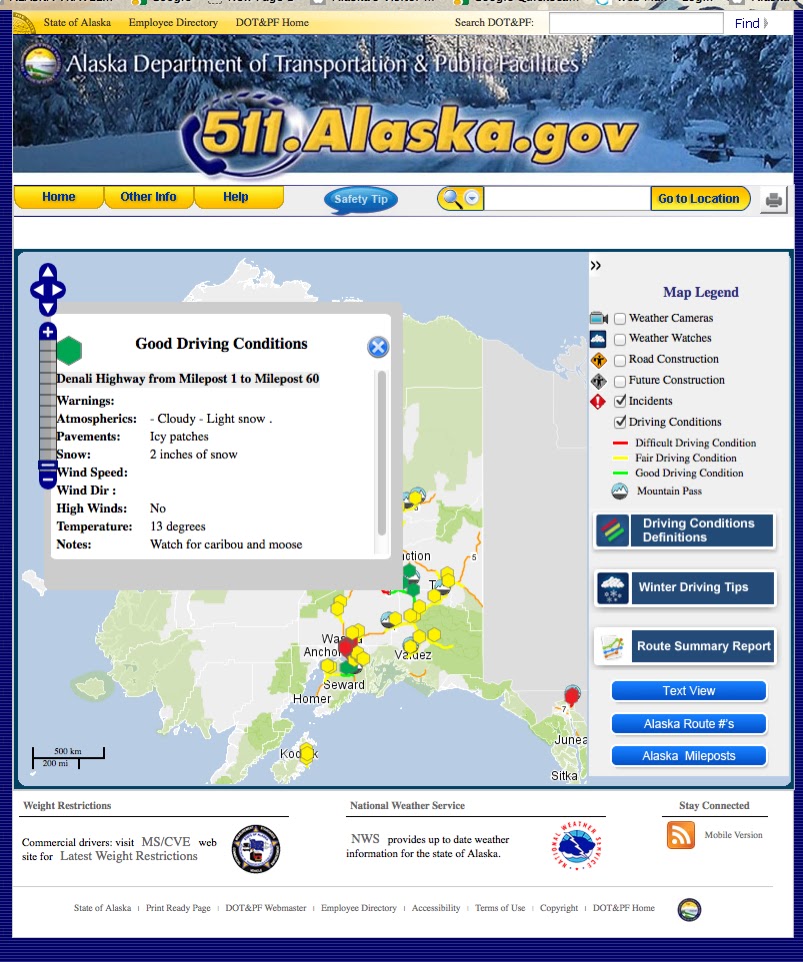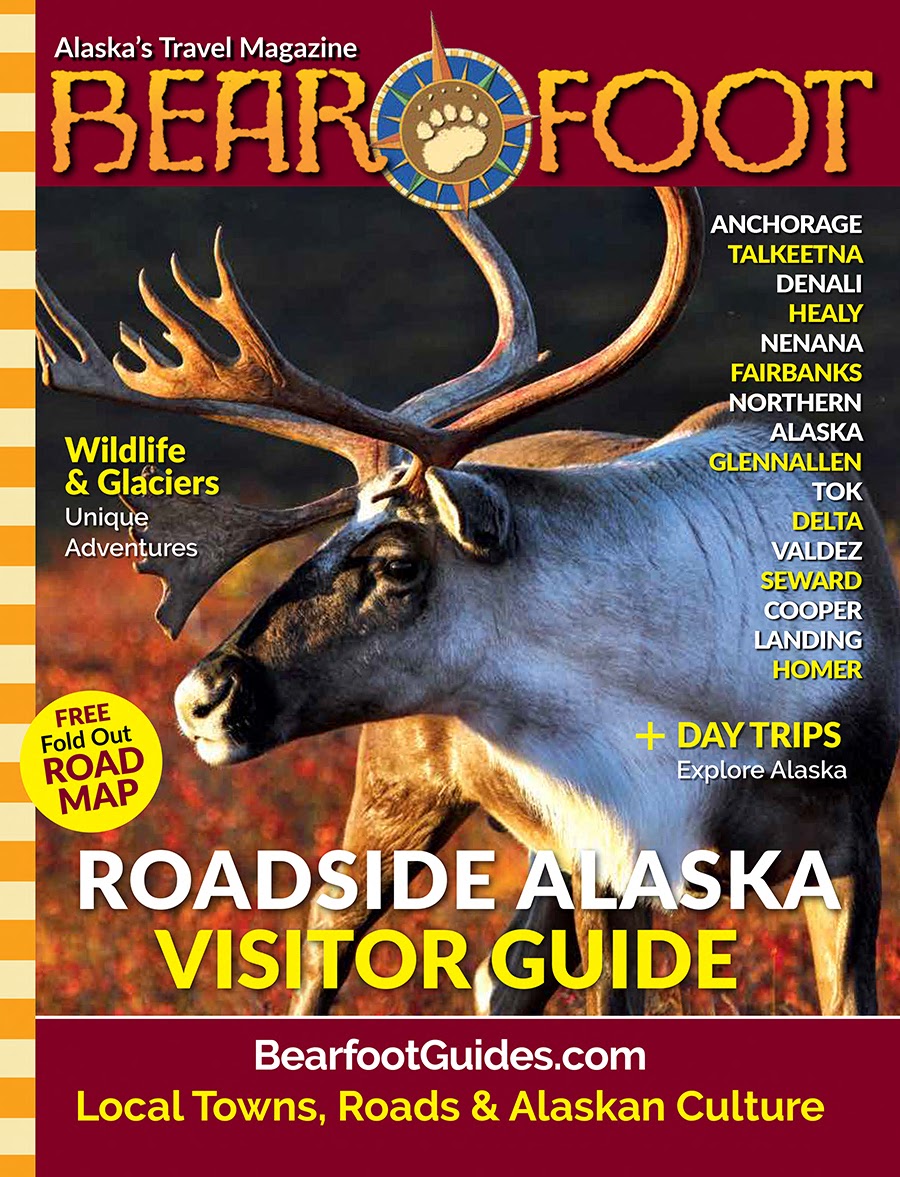It's No Wonder The Glenn Highway Has Its "Issues"– It Was Built By A Bunch Of Guys With Horses Gladys and Harry Heintz in 19...
https://www.countryjournal2020.com/2020/09/the-little-alaskan-town-of-glennallen.html
It's No Wonder The Glenn Highway Has Its "Issues"– It Was Built By A Bunch Of Guys With Horses
 |
Gladys and Harry Heintz in 1991. (File Photo by Copper River Country Journal)
|
The little Alaskan town of Glennallen, in the shadow of the Wrangell Mountains, was named by Harry Heintz in the 1940's.
At least that's what Harry always claimed. And 50 years later, in 1991, nobody else was still hanging around who might contradict him.
It was a small victory, naming the town, and one that Harry cherished.
Harry was a big-boned mustachioed German-American. In the old style, he wore a railroad cap, the way men today wear baseball caps. He had come to the Copper Valley from Seattle in 1935 to help his uncle run a non-productive mining camp at "Grubstake" on Ahtel Creek, between the Ahtna villages of Chistochina and Mentasta, north of where "Glennallen" would eventually spring up.
In his early years, Harry Heintz hung around in that northern part of the Copper River Valley, in the community of Slana. The Slana Roadhouse -- a trading post, post office, hotel and eating place -- was empty by 1938, and Harry, who was ambitious, leased the roadhouse for $30 a month.
 |
Angus DeWitt at the Slana Roadhouse. (File Photo by Country Journal)
|
He spent $3 a month for the single-line phone that connected the roadhouse by wire to Copper Center, almost 90 miles to the south. Harry ran that big, empty log lodge at Slana for 3 winters. Then, in the late 1930's, the Alaska Road Commission began planning a road to connect the isolated Copper River Valley to the Matanuska Valley, which was 40 miles from the coastal town of Anchorage.
At the time, there was no road access from Anchorage into the Interior and beyond.
Hired by the Road Commission, Harry went on down to Santa Claus Lodge, 70 miles southwest of Slana. Back then (before it was destroyed by an ice jam) the three-story log Santa Claus Lodge was a pretty imposing place. Its buildings were proudly strung out along the low and sandy banks of the Gulkana River. The lodge was bold and a vital part of the trail. It was a point of contact for the great Orr Stage Line.
Harry got a four-pack of horses and some supplies from the town of Chitina. Chitina was the main supply town of the era, due to its rail links to the coastal community of Cordova and the famous Kennicott Mines.
The idea was to punch a military road in from the 48 states, through Canada. Once in Alaska, the road would come through the Copper Valley, and then veer across the wilderness toward the coast, eventually arriving at the village of Chickaloon in the Matanuska Valley. From there, it would head to Anchorage.
When the road was finished, it would connect the port of Anchorage to the rest of the territory, Canada, and that faraway place known as "The States" which up to this point had mainly been reached by boat, along the coast of Canada and Alaska.
STARTING POINT: RICHARDSON HIGHWAY
The starting point of the new Road Commission road was the Richardson Highway. The Richardson was a narrow, two lane road. Around 16 miles south of Santa Claus Lodge, on the Richardson, a Juneau engineer, a guy from Valdez, and Harry Heintz set to work. They started hacking a trail cross-country toward the village of Chickaloon and Palmer -- a farming community in the Mat-Su Valley.
They struggled through the dense black spruce, alder, bogs and willow that cover the Copper Valley.
After two weeks of bushwhacking across trackless terrain, Harry Heintz returned to the Gulkana River with the horses. The animals had been defeated by the swamps. They had gotten stuck up to their necks in mud. The two other explorers continued on foot. Trail-blazing on their own for two months, they finally reached Sutton, a coal town that was 18 miles past the village of Chickaloon and 14 miles short of Palmer.
In the fall of 1940, Harry tried again. This time he brought in bigger guns. Four pack horses hadn't been enough.
Loaded for bear, young Harry Heintz charged toward the Matanuska Valley -- across the scrub, and the swamps, and the hills and mountains with a D-7 Cat and two bobsleds. The vehicles were crammed with gear, fuel and tents. A total of five men set out towards Palmer this time. It was October. They traveled cross-country for six weeks, some of them almost dying after drinking swamp water along the way.
 |
Matanuska River near Caribou Creek. (File Photo, Country Journal)
|
Finally, they reached the steep and treacherous banks of Caribou Creek. In all that time, they had achieved only about 85 miles; around two miles per day...
Even now, Caribou Creek is a deadly switchback.
Thoroughly intimidated by the dangerous ravine, Harry and his crew once again turned back.
It didn't look all that promising. O.A. Nelson, the defacto "mayor" of Chitina -- a mayorless town then and now -- came up all the way up from Chitina, 70 miles, to put up a playful sign at the point where the Richardson Highway met the new "road" to the Matanuska Valley, and the coast. The sign said, "Road to Chickaloon. Hopefully."
 |
O.A. Nelson of Chitina, Alaska. (Photo, Valdez Museum Archives)
|
By 1941, the first 2 1/2 miles of the new road was finally put in, starting at the highway camp of Moose Creek where they had started. It was where the Glennallen Library is now and where a new town was going to spring up.
MOOSE CREEK
The Moose Creek highway camp needed a name. And Harry offered one. He approached the superintendent of the road project.
"The superintendent one day, he says to me -- I'm working 28 hours out of the 24 -- he says, 'Harry, this is Moose Creek. And it's going to be quite a settlement some day'," Harry recalled 50 years later. "This is Mr. Shepherd -- He says, 'We got to have a name for this area -- this Moose Creek area.'
"I said, 'Well, Mr. Shepherd, in the early days when the army was surveying up the Copper River Country to Fairbanks, two of the head engineers of that party -- one was a Major Glenn and the other was a Lieutenant Allen.
"So I says, 'Mr. Shepherd, my uncle was here in the early days. I used to hear him talk about Glenn and Allen.' So I says, 'Mr. Shepherd, this is a new settlement going in here. How about naming it Glennallen, in honor of those two men?' So he says, 'I'll write to Washington DC to get that name.' And about a month and a half later, he flagged me down. He says, 'Harry, our new settlement here will be Glennallen'."
 |
Edwin Glenn. (Wikipedia)
|
The story was a good one, if inexact. Actually, Glenn and Allen weren't "surveyors" -- but military
explorers. They weren't "engineers" and they didn't even travel together or -- perhaps know each other. Allen explored the Copper Valley in 1885. Glenn didn't come along on the scene until over a decade later.
 |
Henry Allen. (Wikipedia)
|
But none of that mattered. The town of Glennallen was on its way, and this was still a world where somebody as ordinary as Harry Heintz could step up and give it a name.
In 1941 and 1942, following the cat trail that Harry had worked on, a civilian crew, living out of tent camps, followed Harry Heintz's cat trail and laid down what is known in Alaska as a "Pioneer Road" -- the trail that later became the Glenn Highway. A pioneer road used everything that was available -- including corduroy (logs placed side-by-side) gravel and sand.
THE COPPER RIVER WAY
When the crew came to daunting Caribou Creek, and to other major gulches, including Jackass Curve, they crossed them by building bridges made out of logs.
The pre-war construction of what was to be known as the Glenn Highway was considered a military secret, and was completed in two years. "Most people can't comprehend what we did do. It was no contractors. Just will power," said Harry. The Copper River way.
Meanwhile, using Slana as a jumping off point, the Army Corps of Engineers punched through another pioneer road -- to the Canada border. It was called the "Alaska-Canada Highway" -- or "The Alcan." By the winter of 1942, the Alaskan stretch of the Alcan Highway was completed, and goods could be freighted across Canada to Alaska.

















